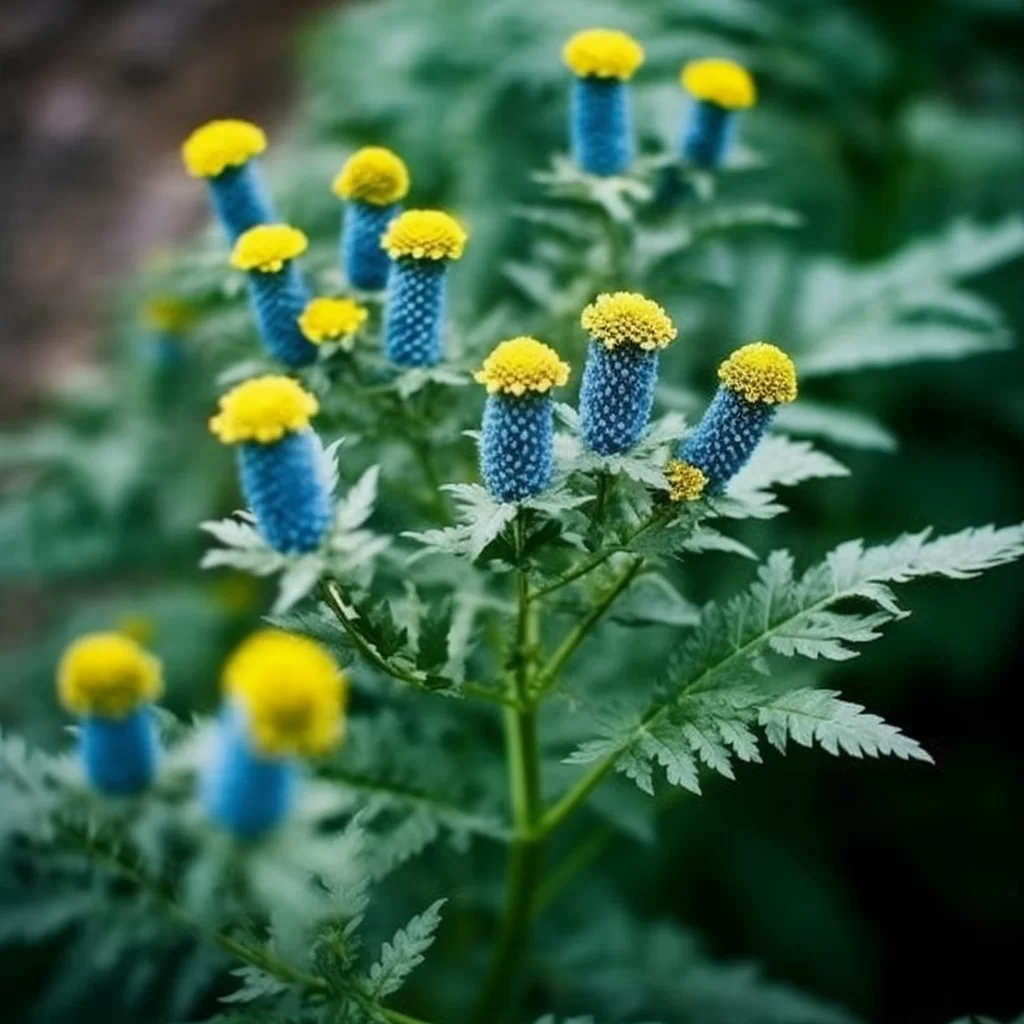Story of Day :
Contents
The Blue Tansy Plant: A Complete Guide and Care Tips
Gardening enthusiasts often pride themselves on growing exotic plants that bring a touch of uniqueness to their gardens.
The blue tansy plant is one such plant that has become popular in recent years.
This article provides a complete guide on the blue tansy plant, including its origins, characteristics, care tips, and benefits.
Origins of the Blue Tansy Plant
The blue tansy plant (Tanacetum annuum) is also known as Moroccan chamomile or blue chamomile.
It belongs to the Asteraceae family and is native to Morocco but grows in other parts of Europe and Asia as well.
Historically, Moroccans used this herb for its medicinal properties.
They would steam-distill the flowers to produce an essential oil that they believed had anti-inflammatory, antihistamine, and calming effects.

Characteristics of the Blue Tansy Plant
- The blue tansy plant is an annual herb that grows up to 60cm in height.
- It has fern-like leaves with tiny hairs covering them.
- The flowers are small yellow buttons surrounded by bright-blue petals arranged in clusters at the ends of stems.
When crushed or cut open, they release a strong aroma similar to camphor or eucalyptus oil.
Care Tips for Growing Blue Tansies
Growing this beautiful yet unusual herb requires specific conditions for it to thrive:

- Sunlight: The blue tansy prefers full sun but can tolerate partial shade in hotter climates where it needs protection from afternoon heat stress.
- Soil: The plant does best in well-draining soil that is rich in organic matter.
Too much moisture can cause root rot, so ensure that the soil is neither too wet nor too dry.
- Water: Blue tansies require regular watering but do not overwater them as it causes root rot and may harm the plant.
Watering should be done when the top 1-2 inches of soil feels dry to touch.
- Fertilizer: Apply fertilizer during planting and every four weeks after for optimal growth, but use only a small amount of balanced fertilizer because excess nutrients can harm these plants
- Pests and diseases:The blue tansy plant is susceptible to aphids, spider mites, thrips, whiteflies, and powdery mildew.
Check regularly for these pests by inspecting leaves’ undersides or using sticky traps.
If detected early enough, spray with insecticidal soap or horticultural oil.
The Benefits of Blue Tansy Plant
The blue tansy has numerous benefits ranging from medicinal to cosmetic purposes.
- Anti-inflammatory properties:The essential oil extracted from the blue tansy has anti-inflammatory compounds like chamazulene that reduce inflammation caused by skin conditions like eczema and psoriasis when applied topically on inflamed areas.
- Sleep aid & relaxation:This herb’s calming scent can help induce sleepiness while also promoting relaxation when diffused into your bedroom before bedtime or added to bathwater as an aromatherapy aid.
- Cosmetic uses: The blue tansy essential oil is used in cosmetic products like serums, creams, and lotions.
Its antioxidant properties help to fight free radicals that can cause premature aging of the skin.
Also, it’s a natural remedy for acne-prone skin due to its antibacterial properties that work effectively on P.acnes bacteria.

Conclusion
The Blue Tansy plant is a unique herb with numerous benefits ranging from medicinal to cosmetic purposes.
This guide has provided insights into the origins, characteristics and care tips for growing this beautiful plant.

If you are looking for an exotic plant to add some variety or depth to your garden or want a natural remedy for various illnesses or cosmetics uses- Blue Tansy is worth considering!